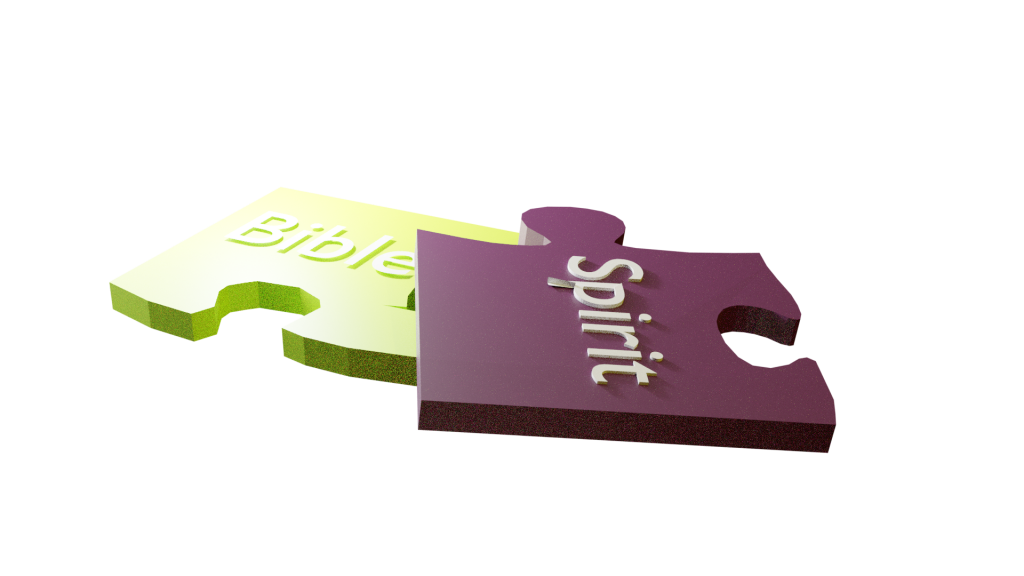Writing the Personal Statement of Faith for Confirmation Students

I had the pleasure, a few days ago, of being one of the minister-coaches for confirmation students who were writing personal statements of faith. This particular confirmation class consisted mostly of senior high students. They were moving towards church membership at the First Presbyterian Church in Sarasota, Florida. My task as a coach was to meet one-on-one with them, answer questions, and support them as they worked to improve their first drafts.
As each student read aloud what he or she had written, I was surprised at how thoughtful the drafts were. I’m a newly retired minister. I’ve just moved to Sarasota and am new to First Presbyterian. I don’t know much about the congregation’s confirmation class or youth program. But as I listened and talked with these confirmands I knew that somewhere in their church experience they had been nurtured in an unusually effective education program. This background gave rise to, not lots of Sunday school data, but thoughtful personal affirmations. As we talked I toyed with the thought that these statements were comparable to those of third year seminary students preparing for ordination.
The experience renewed in me a confidence that youth, new officers, and other adults can indeed meet the challenge and reap the benefits of writing down what they believe.
Admittedly, the students I worked with were older than the average member of Presbyterian confirmation classes. In congregations where I’ve been the minister, confirmands could be as young as 12. This is why I’ve avoided asking kids to write up a personal statement of faith. I remember one confirmation retreat where one of our little boys, a couple of months shy of our minimum age, begged us to phone his parents so he could go home to sleep in his own bead.
Getting one’s beliefs on paper in an organized way is difficult, especially the first time it is attempted. It’s unfair to give middle school students a pencil and paper and ask them to write a statement of faith in half an hour. Congregations and their education committees need to be respectful both of the task’s complexity and of their students’ capacity to choose words carefully and fit them together in a sensible way.
Third year Presbyterian seminary students develop statements of faith which are required by the governing body which ordains them. These run a page or two in length, sometimes take weeks to complete, benefit from the input of a coach or committee, and will entail several drafts.
A couple of years ago, I wrote an article titled, “Writing the Personal Statement of Faith.” I wrote that piece in conjunction with the writing of my own most recent statement of faith, which was required by the Peace River Presbytery as part of its routine in admitting ministers to its membership.
I decided to publish the statement along with a reflection about the task of writing such affirmations on my website. What surprised me was that that post became the most popular piece on my blog. Approximately, 10,000 people from all over the world have found it on Google and clicked into it. Clearly, people are facing the challenge of writing faith statements for classes, job applications, and ministerial positions.
But I’ve just participated in a program where the faith statement task is going well and I’m freshly enthusiastic about how these can help one’s spiritual development.
I’m also seeing how students can be supported in their own writing and benefit from a couple of strategies that will make the task much more manageable, which is the subject of the rest of this post.

I. Writing a personal statement is difficult.
Everything I suggest below revolves around this insight. The task is difficult for me. It’s difficult for people with theological training.
It’s especially difficult the first time. For middle school age confirmands, pulling together a statement may seem like an terrifying task. Churches today have de-emphasized theological language and doctrine in their religious education. So even youth who have had an excellent church experience may not have exposure to even rudimentary Christian ideas. For more on this check out the findings by the respected National Study of Youth and Religion.
One way dial back the scariness of the faith statement is to ask honestly whether these are a part of the congregation’s general practice. Church leaders, from the ministers to the governing board, should discuss and “own” the decision to ask students to attempt the write a statement of faith. If church officers, adult membership candidates, and religious educators are not writing statements of faith, neither should confirmation students be? If, on the other hand, writing and sharing what one believes is part of a church’s culture, then when youth undertake the task it will indeed feel like a rite of passage and a rich experience.
The first step is a conversation. Will the faith statement be a manageable exercise that fully supported by the church, and integratal to congregational life? Or is it a tacked on exercise that only youth do.
At some point long before the confirmation class is announced church leaders (and ideally parents and confirmation students) need to have a clear-eyed conversation about what confirmands will be asked to do.
II. Students should know why writing a faith statement is important
They should also know how their statement will be used. Again, this is a church leadership decision. Will the statements be displayed or read in a service of worship, be used to flag unorthodox views, serve as a kind of written exam, be the center of discussion if and when students meet with church elders or other leaders, be a learning tool designed to stretch students’ understanding, or be a way for youth to move towards development of their own version of Christian faith, which will be celebrated by instructors?
Teachers should be mindful of students who might be apprehensive of expressing what may be deeply emotional and undeveloped feelings of intimacy with God and faith. If youth are going to pick up a pen and begin writing down what they believe, then they need to do so knowing that whatever they produce will be cherished by their church.
I have participated in confirmation classes where the entire class produces a statement of faith. I think that a group effort is less than ideal. Here’s why. Christian faith has produced creeds and confessions of faith for hundreds of years. These are group efforts. While creeds and confessions, like the Westminster Confession of Faith or the Confession of 1967, deal with the same ideas found in a personal statement of faith, the purpose of a creed is different. Creeds attempt to restate how Christian faith has impact on a particular cultural situation.
Confirmation is essentially a renewal of baptism, though not a new water baptism. Typically, when a child or baby is baptized he or she is unable to make a public statement of faith. Confirmation is a church exercise, which provides “adults” an opportunity to claim or reaffirm the faith that was stated, usually by parents, at the time of water baptism.
So confirmation is a about personal belief and the statement of faith aims to give birth to one’s own relationship with God.
III. Patient, one-on-one coaching should be abundantly available
Coaches are church leaders who have theological training and experience in writing their own statements of faith. Additionally, students should be allowed to talk with and coach one another. By this I mean that statements of faith greatly benefit from much conversation among people who have struggled to write down what they believe. These conversations will be as valuable as the writing itself.
IV. Statements of faith typically touch on several predictable topics
Providing a list of these topics will greatly assist youth in beginning to work with their ideas. Leaders can provide a list. The class can join in adding to it.
Not surprisingly, the core list of topics can include: God the Father, Christ, Holy Spirit, Creation, Church, Bible, Israel, Salvation, The End of All Things, Evil, Ethics, Sacraments, Kingdom of God, Heaven and Hell.
There will be other topics that are important to confirmands. Teachers will find it eye-opening to learn about topics that students feel important enough to include in their statement. Additional topics might include: angels, devil, mission, science, religion, soul, animals, goodness, truth, beauty, and love.
Beginning with a list gives students something tangible to work with. The list is not closed and confirmands may want to include their own categories. One of the students I worked with told me that science was important to him and he wanted to work it into his statement.
As students begin writing out their list, they will realize that some topics need to be cut out or dealt with minimally in their statements. Limiting and prioritizing is hard work and teachers should let students struggle with this task.
The final statement will include a sentence or two about each category or topic. How long? The Apostle’s Creed is 115 words long and my most recent personal statement of faith is right around 1000 words. So, that begins to narrow it down. One page or 250 words might be a reasonable target.

V. The sequence and organization of the topics will make the statement distinct and personal
Both the Apostles Creed and my personal statement of faith are organized around the three persons of the Trinity. Father, Son, Holy Spirit. Of course, there is no necessity to use this scheme. The statement can be twofold– Creation and Redemption. I could see an interesting statement arising out of the the three great values of goodness, truth, and beauty. How about faith, hope, and love?
Generally speaking, I think that the threefold, trinitarian outline is the easiest to work with. But it’s not the only way to approach the statement of faith. My point is that the organization of a statement is where the student will need to be imaginative and will possibly need to learn more about Christianity in order to make the statement hang together.
Even a threefold, Trinity organization can vary the sequence of “persons.” The Apostles’ Creed is organized around the traditional Father, Son, Spirit formula. But what about the reverse ordering—Spirit, Son, Father. Maybe the Holy Spirit is that expression of God that touches and draws us towards God first. Then we meet Christ. Last of all, we understand the creative and providential working of the Father.
The organization of the statement presses us to think how different elements are related. Do the sacraments (baptism and the Lord’s Supper) belong in the Spirit, Son, or Father category? How is evil related to the Kingdom of God? These are the kinds of challenges that writing a faith statement will raise. Hopefully, when the students run into these good dilemmas, they will have one another and thoughtful coaches who can raise powerful questions and provide bits of missing information.
Summary
So, two strategies will increase the chances that the personal statement of faith will be a successful part of confirmation. The first is creating a safe environment. The statement of faith is not or should not be a test. It should not cause younger, less motivated, or shy students to stand out in an embarrassing way.
Second, the teachers should provide tools to prime the pump. The list of topics, the role of the outline or structure, kindly coaches, plenty of time, acknowledgement of the difficulty of the task, and a guarantee of praise when the job is done will greatly encourage even the most discouraged student.

